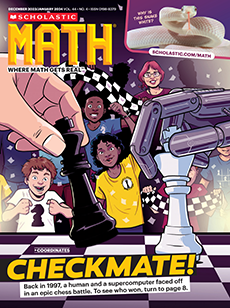Visit NASA’s website solarsystem.nasa.gov/asteroids-comets-and-meteors/asteroids/overview to learn about asteroids. Scroll down to the “Key Science Targets” section and select a few asteroids to discuss as a class. Allow students to share what information they found new or interesting. Then tell students that they are about to read an article on how astronomers track asteroids and try to prevent them from making impact with Earth.
CCSS: 6.EE.B.7, MP2, MP3, MP5
TEKS: 6.6C, 6.9A, 6.10A
